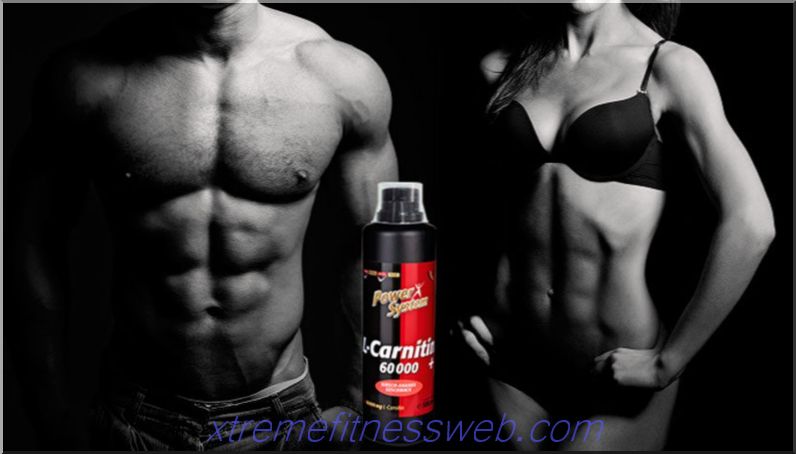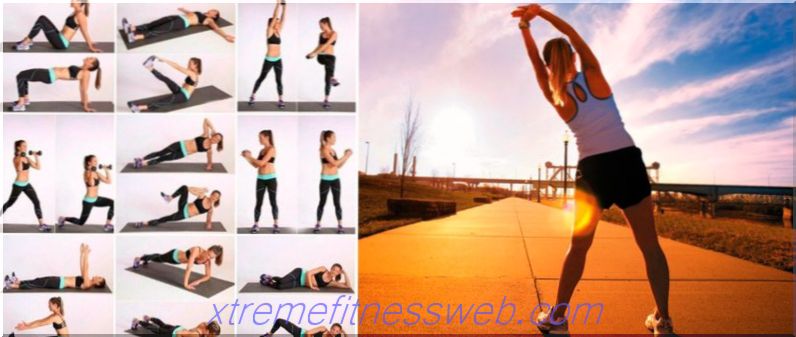
A diet for drying (driving overweight) is almost 70 percent success, and no hard work without a properly designed nutrition plan can not bring the desired result.
It is imperative to get rid of the idea that your previous diet is suitable for the period of your training. This is not true at all. You will be forced to radically change your diet plan.
Content
- 1 What is drying during bodybuilding "> 2 The main points of the diet, which you must adhere to if you decide to go through the drying process during bodybuilding:
- 3 It is recommended that you include the following list of foods in your drying diet:
- 4 Sample diet:
What is drying during bodybuilding?
Drying is a competent workout in conjunction with a properly composed diet, which is based on a decrease in the amount of subcutaneous fat while maintaining muscle mass gained earlier.
The main points of the diet, which you must adhere to, if you decide to go through the drying process during bodybuilding classes:
- The greater the amount of fat mass in your body, the more protein you need to eat instead of carbohydrates. That is, if before the ratio of protein-fat-carbohydrate was approximately 20-20-60, now it is necessary that on the contrary it would be 60-20-20. This means that approximately two-thirds of the consumed carbohydrates during the stage of muscle building should be replaced using proteins. But, in no case should you completely abandon fats and carbohydrates, otherwise you can harm your own health. The proportion of protein should be increased in comparison with the usual periods of training and can be 3-4 grams per kilogram of your body weight.
- All the same, how many calories and carbohydrates do you need to make to dry in your diet? The dosage of intake of fats and carbohydrates should be selected individually, taking into account the personal characteristics of the metabolism. This is quite easy to do - at a fairly slow pace and gradually reduce the amount of carbohydrates eaten during the day, until the process of burning fat is activated. This can be seen with a decrease in body fat, as well as a decrease in body weight.
- The main amount of protein consumed during drying should come from sports nutrition. What is the reason? The fact is that even in products with a high protein and low fat content, it does not matter whether it is fish, seafood or chicken, contains a large amount of saturated acids, which is completely unacceptable in today's situation. I would like to recommend stocking up with soy or whey protein. Protein is able to suppress catabolic processes and protect muscles, without interfering with the drying process. You can find out what protein should be chosen and how to use it, on the website of Vladimir Molodov, from which you can download a video course on sports nutrition for free. You need it so that you have the opportunity to easily navigate the names of non-steroidal drugs and choose what you really need at this very moment, and not what the seller or fitness instructor recommends to you. I would like to recommend this site to everyone, since there is really high-quality information.

- There should be absolutely no post-workout gainers, which many mistakenly recommend. Only protein and carnitine. In one of the following articles, we will discuss sports nutrition during overweight driving in more detail.
- During aerobic exercise, it is necessary to make it a rule to get carbohydrates only from products of natural origin, that is, from fruits or vegetables. No pies or rolls! Try to forget about products that kill the figure, at least for the period of the diet.
- Try to eat foods that have a low glycemic index, slow carbohydrates. It is necessary to exclude “high glycemic” and “simple” carbohydrates. A table of products and their glycemic indices is presented in the image below. The glycemic index indicates the speed of absorption of carbohydrates, and whose index is lower, the better it will be for you. Foods with a low glycemic index break down very slowly in the body and give you energy for a long period of time and are not stored as fat. Slow carbohydrates are found in cereals, wholemeal foods, nuts, vegetables, and unsweetened fruits.
- Try to eat more often, but in very small portions. This rule applies not only during overweight driving, but also during muscle gain. In general, a frequent diet can be called the basis of the diet of any bodybuilder. Do not eat two hours before training and an hour and a half after.
- Any carbohydrates 4 hours before bedtime are prohibited. Taking carbohydrates at night, your body simply cannot physically process them during night sleep and they will be stored in reserve. At night, it is best to drink a little protein shake in water or skim milk.
- The duration of the diet, which is necessary for drying, is usually determined individually for each athlete, but usually it is 5-8 weeks. The essence of the diet is to gradually reduce the amount of carbohydrates every week. In the last week, carbohydrates are completely removed, and one carbohydrate week is set. Protein-containing foods must be taken a lot and often. Only an exclusively “protein” diet is able to exert additional stress on the kidneys. There is also a risk of ketosis (accumulation of ketone bodies in the blood) and even ketoacidosis (acidification, poisoning by ketone bodies), leading to drowsiness, weakness of the lips, dryness of the mouth, and other unpleasant effects. As a result, it must be concluded that neither in no case should you abuse this diet.
- Drying, as a rule, begins gradually, you can not immediately give up carbohydrates and fats. A smooth gradual decrease in the intake of foods with carbohydrates will give you the opportunity to stay at a distance at the initial stage of the diet.
- On a diet during drying, water intake should never be limited. This is the most common mistake made by inexperienced people in this matter. Thanks to water, metabolism is accelerated, and accordingly all processes, such as dumping and weight gain, occur faster.
- We must not forget about the consumption of vitamin complexes, fiber and minerals during weight loss, because drying is a psychologically and physically difficult process and a deficiency of vitamins or minerals will only aggravate your physical and psycho-emotional state.
- Eliminate all kinds of mayonnaise, ketchups, crackers and sauces from your diet. Also, during the drying period, alcohol is unacceptable, because it can irritate the mucous membranes, as a result of which you will overeat. Also salty, smoked and canned foods, even with the optimal composition of macronutrients, should be excluded.
- A number of bodybuilders practice eating at night to suppress muscle-destroying catabolism. You can wake up at night and drink a protein shake, thereby preventing the muscles from breaking down during sleep. Thanks to this lifestyle, it is possible to demonstrate high-quality musculature and a flat stomach in competitions.
- If possible, avoid dairy products with the exception of low-fat cottage cheese, because even low-fat dairy products contain a lot of carbohydrates that help retain fluid in the muscles, which as a result will not allow the necessary muscle relief to develop.

It is recommended that you include the following list of products in your diet for drying:
- Lean meat
- A fish
- Eggs
- Fat-free dairy products - cottage cheese, kefir, milk
- Porridge - millet, oat, buckwheat, corn, etc.
- Legumes - peas, beans, beans
- Fruits and vegetables
Sample diet:
Description: This drying diet is designed for seven days . It lists only the main meals. In the interval between receptions, it is recommended to have a snack. Based on the above criteria for an optimal diet during drying, it is possible to draw up your nutrition program for the time of excess weight driving.
Monday
- For breakfast - oatmeal flakes, sweet tea, protein shake;
- For lunch - chicken broth, chops with buckwheat, fresh vegetables;
- For dinner - fish fried in vegetable oil, fresh vegetables;
Tuesday
- For breakfast - buckwheat flakes, low-fat fish, tea with lemon and sugar;
- For lunch - chicken breast and vegetables, cauliflower soup;
- For dinner - cottage cheese, low fat with dried fruits and a protein shake;
Wednesday
- For breakfast - two boiled eggs, tea;
- For lunch - fish soup, fish boiled with potatoes;
- For dinner, fruit with a protein shake
Thursday
- For breakfast - muesli with a protein shake;
- For lunch - soup with mushrooms, chicken breast, vegetable salad;
- For dinner - stewed fish and carrot salad with cabbage;
Friday
- For breakfast - an omelet from 2 eggs, a bun with honey and tea;
- For lunch - buckwheat soup, porridge with chicken, fruit juice;
- For dinner, 2 apples, a protein shake;
Saturday
- For breakfast - semolina porridge with raisins, protein shake;
- For lunch - rice soup, peppers stuffed with cabbage, tea with lemon and sugar;
- For dinner - a pair of boiled eggs, a protein shake;
Sunday
- For breakfast - stewed fish, vegetable salad;
- For lunch - pickle, chicken breast and rice, fruit juice;
- For dinner, one apple with a protein shake.
In conclusion of this material, I would like to say again that the high intensity of training, the main purpose of which is to reduce subcutaneous fat while maintaining muscle mass, does not mean anything without a diet composed competently and specially adapted for these purposes. If the diet has almost the same value as the training cycle during the mass gain cycle, then during drying, the nutrition plan comes to the fore and should comprise at least 70 percent of successful overweight driving.








